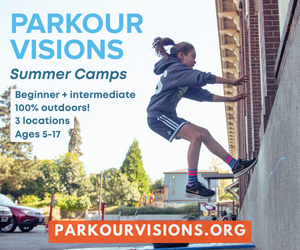How do you deal with difficult emotions? Maybe you find yourself angry at a family member over political differences, or frustrated with your teenaged daughter when you’re already overtaxed, or upset about another of the numerous struggles we are facing right now.
If you’re like most people, the way you deal with difficult feelings is to hang onto them. You’ve felt the pain of the situation, and now every time you’re reminded of that person or conversation, which is often, the same bad feelings suddenly arise. Much as you hate it, you’re hooked in a negative thought pattern.
This is normal! It’s the result of your biological safety system at work, judging and recording painful experiences so you will avoid them next time. The challenge is, this safety system, is housed in the oldest part of the brain, where it doesn’t naturally align with your big picture goals. Instead, you instantly pass through these ingrained thought patterns without stopping to review which outcome you really want for yourself.
 Like when you talk with your brother-in-law and find yourself judging and reacting to everything he says, as you predict the worst case based on past events. If you do get triggered, you’re back in the same old pattern you swore you’d avoid this time. Your response happens before your conscious mind is even aware of it! Your brain is designed to work as efficiently as possible, so running the same track is always your default.
Like when you talk with your brother-in-law and find yourself judging and reacting to everything he says, as you predict the worst case based on past events. If you do get triggered, you’re back in the same old pattern you swore you’d avoid this time. Your response happens before your conscious mind is even aware of it! Your brain is designed to work as efficiently as possible, so running the same track is always your default.
The (Constant) State of Stress
Lingering difficult emotions keep us in a state of stress that not only feels bad, it colors our perception of what’s possible, how we might change even in the most challenging situations.
During times of prolonged stress, when change is happening and life feels uncertain, it’s hard to let go of the painful thought patterns that keep us stuck. Consequently, the thought patterns compound the stress, making it more difficult to find your way out of.
The Benefits of Mindfulness Practice
Popularized by the work of Dr. Kristen Neff, studies show that the mindfulness practice of self-compassion is a proven tool for increasing self-awareness and reducing stress. As the name suggests, compassion involves treating yourself in the same way you would a loved one, when you’re having a difficult time, fail, or notice something you don’t like about yourself. Instead of just ignoring your pain with a “stiff upper lip” mentality, or hanging onto negative judgements, you stop to tell yourself “this is really difficult right now,” how can I comfort and care for myself in this moment?
This sounds great on paper, and works really well when you’re able to stay present and look objectively at the situation, but when you’ve been dealing with stress or self-doubt for a long period of time, it’s not easy to be there for yourself. In fact, even for people very familiar with the practice, sometimes being able to comfort yourself isn’t possible.
During those times, it’s important to find what self-compassion expert Dr. Tara Brach calls a bridge to self-compassion. When you’re unable to be there for yourself, it’s critical to find an outside source of support, whether that’s through your community, interpersonal support, a spiritual practice or a physical practice. These are some of the ways, but you can substitute any sustainable source that works. Note: wine isn’t on this list!
When you’re feeling in need of emotional support, the bridge to self-compassion invites you to ask yourself who or what would help you. There is vulnerability in this practice as you allow yourself to ask for help. Some people worry this “let’s them off the hook” or undermines their drive in some way. Yet instead of weakening us, being vulnerable allows us to bring kindness to suffering while building our resolve and resilience in the process. As Dr. Brach puts it “soft front, strong back”.
The Practice (adapted from the work of Dr. Kristen Neff)
Find a quiet place where you feel safe and calm, where you won’t be disturbed.
Find your seat in upright position with hips slightly elevated. You can sit cross-legged if it’s comfortable, but choose the posture that works best for you.
Begin your practice by gently closing your eyes or relaxing your gaze.
Start to breathe through your nose as you tune into the rhythm of your breath. Don’t try to manage it, just notice as it flows in and out. This will help you to calm the nervous system and begin to feel grounded.
Think of a situation in your life that is difficult, that is causing you stress. Call the situation to mind, and see if you can actually feel the stress and emotional discomfort in your body.
Now, say to yourself:
1. This is a moment of suffering
This is mindfulness, connecting to the present moment. Other options include:
• This hurts.
• Ouch.
• This is stress.
2. Suffering is a part of life
That’s common humanity. Other options include:
• Other people feel this way.
• I’m not alone.
• We all struggle in our lives.
Put your hands over your heart, feel the warmth of your hands and the gentle touch of your hands on your chest. Or adopt the soothing touch you discovered felt right for you.
Now, ask yourself:
3. What Do I need right now?
• See if you can sense what you need and what might help you most right now. Is it acceptance, reassurance of being worthy? Is it comfort or company?
• Now think about what helps you to feel safe. Is it knowing you can get through this? That this situation is temporary? Is it a higher power?
4. Imagine connecting with that source, that higher self or outside source that lets you know you’re okay, that you’re deserving of love and support, including your own.
• Let your defenses relax as you thank them for trying to protect you. Imagine that larger source. Visualize, open yourself to it. Imagine love flowing from a universal presence into your heart. Let love in.
• Feel your breath. Put your hand to you heart and feel into your intention.
• Check in with yourself, with your body.
• Feel your connection to the earth, as that sense of grounding reaches all the way up into our heart. Know that you’re held and loved.
5. Sense the quality of presence that has emerged – more tenderness, more openness more freedom.
When you’re ready, close your practice by gently opening your eyes, and asking yourself,
How can I reconnect to this source when I need to feel grounded?
Let this intention guide you during times of challenge, as you remember you’re part of something bigger, a universal presence that is always there for you. When challenges arise, reconnect with your breath to reconnect with your higher self.


















